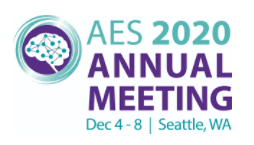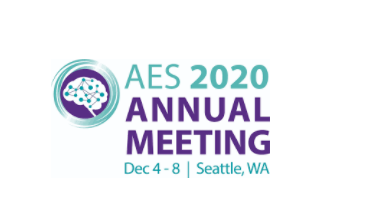El equipo de investigación clínica en epilepsia liderado por el Dr. Uranga cuenta con una ámplia experiencia en ensayos clínicos y estudios de Real World Evidence, por ello hemos participado en este estudio con autores de primer nivel internacional de diferentes países de toda la geografía mundial; Austria, Australia, Korea y España. La AES es en la actualidad la sociedad de mayor impacto en Epilepsia dentro a la ILAE (Liga Internacional contra la epilepsia).

Este estudio demuestra la experiencia en vida real con el fármaco antiepiléptico perampanel en la epilepsia en pacientes mayores de 65 años.
Effectiveness and Safety of Perampanel in Elderly Epilepsy Patients (aged ≥65 Years) Treated in Everyday Clinical Practice
Alexandra Rohracher1, Dong Wook Kim2, Juan Jesús Rodriguez-Uranga3, Wendyl D’Souza4, Eugen Trinka1, Rob McMurray5, Vicente Villanueva6
1 Department of Neurology, Christian-Doppler de los University Hospital, Paracelsus Medical University, Centre for Cognitive Neuroscience, Salzburg, Austria;2 Department of Neurology, Konkuk University School of Medicine, Seoul, Korea; 3 Centro de Neurología Avanzada, Sevilla, Spain; 4Department of Medicine, St Vincent’s Hospital Melbourne, The University of Melbourne, Victoria, Australia; 5European Knowledge Centre, Eisai Europe Ltd, Hatfield,
Hertfordshire, UK; 6Refractory Epilepsy Unit, Hospital Universitario y Politécnico La Fe, Valencia, Spain


RATIONALE
Perampanel (PER) is a once-daily oral antiepileptic drug indicated in the US for the treatment of focal-onset seizures in patients aged ≥4 years, and as adjunctive therapy in the treatment of generalized-onset tonic-clonic seizures in patients aged ≥12 years. Elderly patients are often excluded from clinical trials and consequently there is limited information about the effects of PER in this population. We conducted a pooled analysis of real-world studies to evaluate the effectiveness and safety profile of PER in epilepsy patients aged ≥65 years treated in clinical practice.
METHODS
Using databases from centers across Europe, Asia, the Americas and Australia, an interim pooled analysis was conducted of studies that collected clinical practice data on patients treated with PER for focal or generalized seizures. The primary assessment was retention rate (proportion of patients remaining on PER after treatment initiation). Efficacy assessments included seizure freedom rate (no reported seizures since at least the prior visit) and responder rate (≥50% reduction in seizure frequency) at the last visit. Tolerability was assessed by evaluating adverse events (AEs) and AEs leading to discontinuation. A subanalysis of data from patients aged ≥65 years was conducted to assess PER in this population.
RESULTS
Overall, 18 studies/work groups were included in this study. Of the 3496 patients included in the interim pooled analysis, 256 were aged ≥65 years (50.8% female; mean age 72.4 years). The majority of patients (77.4%) had focal seizures only; 6.7% had generalized seizures only and 6.0% had both focal and generalized seizures. At treatment initiation the majority of patients were on 1 or 2 concomitant antiepileptic drugs (1.2% initiated PER as monotherapy). The mean (standard deviation) PER dosage was 2.6 (1.4) mg/day at baseline and 5.7 (2.5) mg/day at last visit. Retention rates at 3, 6, and 12 months were 87.6% (190/217), 74.1% (160/216) and 58.4% (118/202), respectively. The main reasons for discontinuation were AEs (20.7%), lack of efficacy (6.0%) and both (2.3%). The efficacy population (defined as patients who initiated PER treatment and had ≥1 efficacy measurement available) consisted of 212 patients. At the last visit, seizure freedom rates in patients with focal and generalized seizures were 35.0% and 42.9%, respectively; the corresponding values for responder rates were 68.7% and 83.3%, respectively (Figure 1). The safety population (defined as patients who initiated PER treatment for whom safety data were available) consisted of 221 patients. AEs were experienced by 52.0% of patients (Table 1) and the most common AEs were dizziness/vertigo (16.3%), somnolence (11.3%) and behavioral AEs (10.4%).
CONCLUSIONS
PER was effective for both focal and generalized seizures and was generally well tolerated when used to treat elderly patients in clinical practice.
Study supported by Eisai
Figure 1. Responder and seizure freedom rates at the last visit in patients aged ≥65 years with focal seizures and generalized seizures. Seizure freedom rate was defined as no reported seizures since at least the prior visit. Responder rate was defined as ≥50% reduction in seizure frequency.
Table 1. Summary of adverse events
| Safety population | N=221 |
| Patients with any AEs, n (%) | 115 (52.0) |
| Most frequentlya reported AEs, n (%)
Dizziness/vertigo Somnolence Behavioral (aggression/anger/irritability) Fatigue Falls/instability/ataxia |
36 (16.3)
25 (11.3) 23 (10.4) 13 (5.9) 12 (5.4) |
| AEs leading to discontinuation, n (%) | 46 (20.7)b |
| Patients with any psychiatric AEs, n (%) | 36 (16.3) |
| Patients with psychiatric AEs leading to discontinuation, n (%) | 18 (8.1) |
| Most frequentlyc reported psychiatric AEs leading to discontinuation, n (%)
Behavioral (aggression/anger/irritability) Depressed mood/mood disturbance |
9 (4.1) 4 (1.8) |
| a≥5% patients; bN=217; c≥1% patients. AE, adverse event | |



